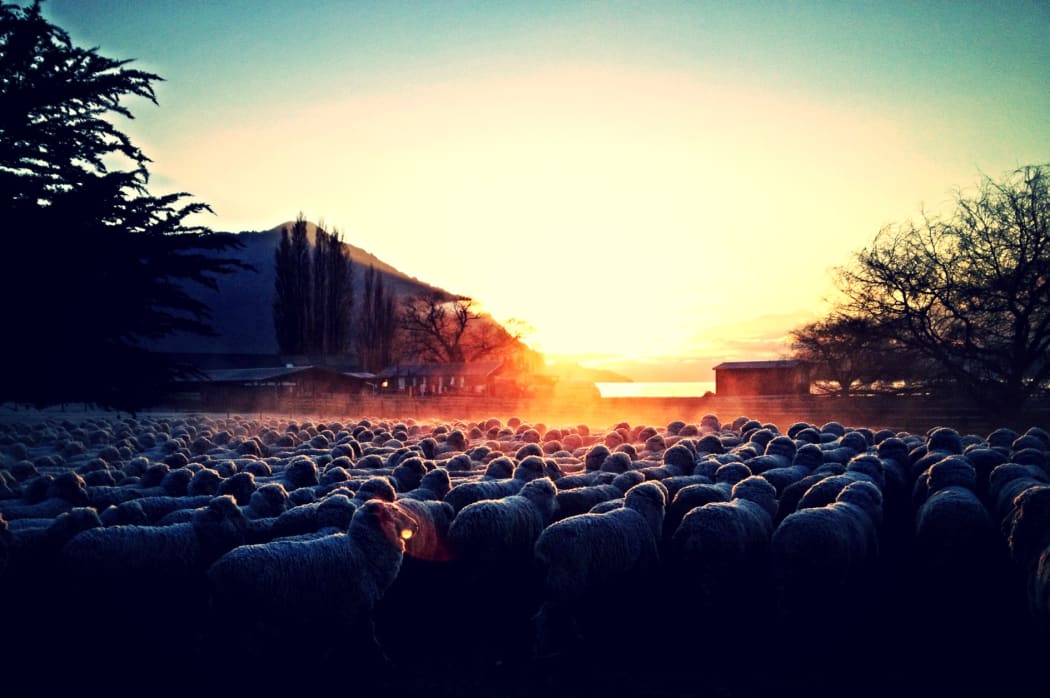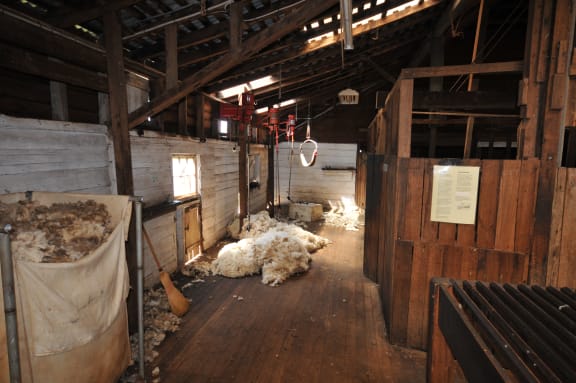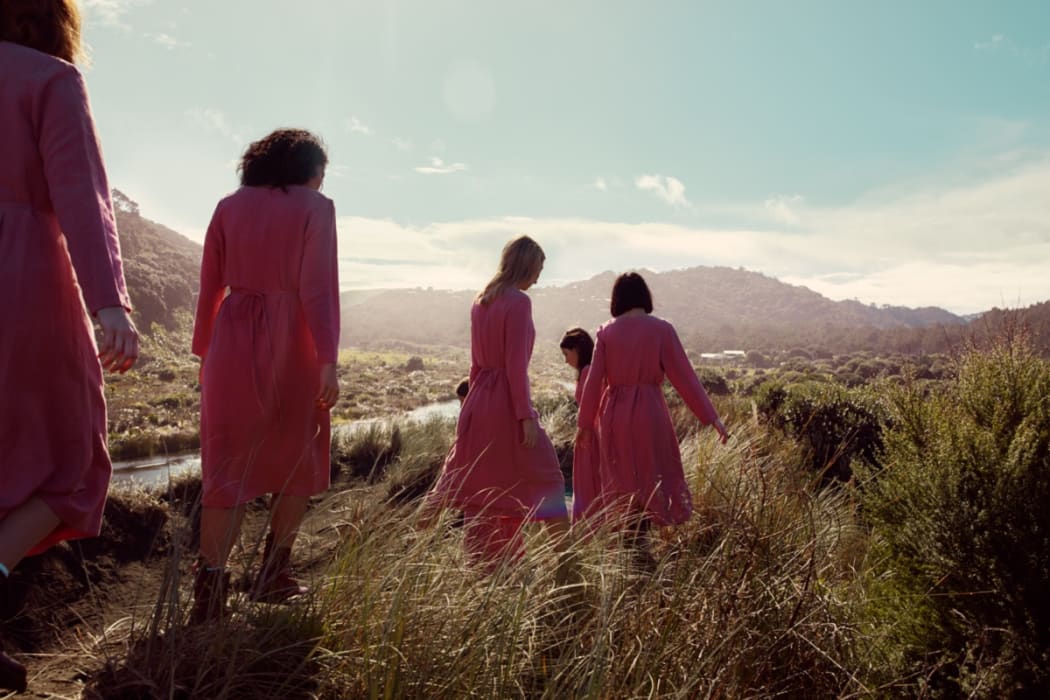SHEARING SHEDS, LUXURY, AND A STORY OF SURVIVAL FROM THE WAHINE

On Mt Nicholas Station, the shearing gang rises early to shear 200 sheep a day Photo: Mt Nicholas Station
For Mavis Mullins, the romance of wool is real. Given her upbringing as a Māori child of shearing contractors whose early life was spent in and around wool sheds, it’s not surprising that this businesswoman first trained as a wool classer.
She remembers as a youngster hot scones, mugs of black tea made drinkable only by the teaspoons of sugar added, and shearing sheds full of kids helping or getting in the road. “When we got tired, someone would make us a bed on a bale of wool. Crates of big bottles of brown beer. Guitars. Singing. Family. Fun. That’s what wool was for me. To me that was home.”

Interior of the shearing shed at Brickendon Historic Estate Photo: Wikimedia Commons
So for her, pictures of woolsheds – without the smell of sheep droppings but suffused with soft light on timber floors and beautiful old machinery – are reminders of her identity. “You know there’s a whole package of images there for me,” she says. And international customers for her present-day family business such as Dixie Wools in the USA also like them. Why? “The look of those beautifully-lit sheds with a bit of a vista out. They’re real. They’re not fake. “
However, Rachel Easting and Anjali Stewart don’t think customers of their clothing label twenty-seven names would be interested in seeing a paddock with a sheep in their promotional imagery. Instead, they intend their designs to be engaging, inclusive and beautiful. They want to make customers feel ‘Yeah, I could totally wear that and that would feel good on me.’
All the same, wool is important to them both as designers. Rachel explains: “We feel that responsibility to a woman in Gore who has Marmite-coloured hair and wears, like, a thousand woollen layers to the Hokonui Design Awards. She wants a beautiful woollen dress to wear. Or a blogger in Ponsonby who’s wearing active-wear but also wants a full-length coat which just grazes her ankles.”
They will, she says, continue designing and making clothes from New Zealand wool, even if they have to get the fabrics manufactured overseas: “We just can’t let it go. We just love it. We think it shows luxury.”

From a twenty-seven names collection Photo: twenty-seven names
Although luxury had been a focus of the 1960s fashion campaigns by the NZ Wool Board, its most unusual promotion came at the end of that decade, presenting a story of survival and rebirth from one of our greatest maritime tragedies.

The Wahine lists heavily as it sinks in Wellington Harbour Photo: Alexander Turnbull Library
Claire Regnault, Senior Curator of New Zealand History and Culture at Te Papa recounts what happened when during a terrible storm the Wahine inter-island ferry sank on 10 April 1968 at the mouth of Wellington harbour. 53 lives were lost in the worst maritime disaster in the country’s modern history.
The following year, an article appeared in the pages of the New Zealand Women’s Weekly about the survival of a cocktail dress and a man’s suit. While the owners made it safely to shore, it was months before their luggage was salvaged out of the fuel oil, slimy silt and rust of the Wahine’s hold.
When Diane Wilson received her suitcase the only garment not to have perished was her favourite, woollen, party frock. Much to her amazement, dry cleaning returned it to its former glory.
The plastic suitcase of a Mr Nathan had totally disintegrated. However, his new wool suit survived, minus its synthetic lining. Following drycleaning and relining, he was wearing the garments again, stating that he and his wife were now more convinced than ever that there is 'no substitute for natural fibres.'
The Wool Board parlayed this local disaster into a good news story for wool, which at that time was coming under increasing pressure from new, easier-care and cheaper synthetic fabrics and fibres.

Simon Morton, Claire Regnault, Anjali Stewart, Rachel Easting and Mavis Mullins Photo: Victoria University of Wellington. All rights reserved.
Wool is passing muster in the world of high fashion, but it’s now a niche fabric occupying only 1% of the fibre market. So does it keep a grip on our sense of identity any more? Discussing the place of wool in our idea of what it means to be a New Zealander are Claire Regnault, Senior Curator of New Zealand History and Culture at Te Papa, and Rachel Easting and Anjali Stewart of the clothes label twenty-seven names. They are joined by Mavis Mullins, a Māori business leader and former shearing contractor recently inducted into the New Zealand Business Hall of Fame. This session is chaired by RNZ’s Simon Morton.

VUW logo Photo: Victoria University of Wellington. All rights reserved.
The Butcher Shop series of discussions about the place of primary production in our history and culture is created by Victoria University of Wellington under its Enriching National Culture theme.

